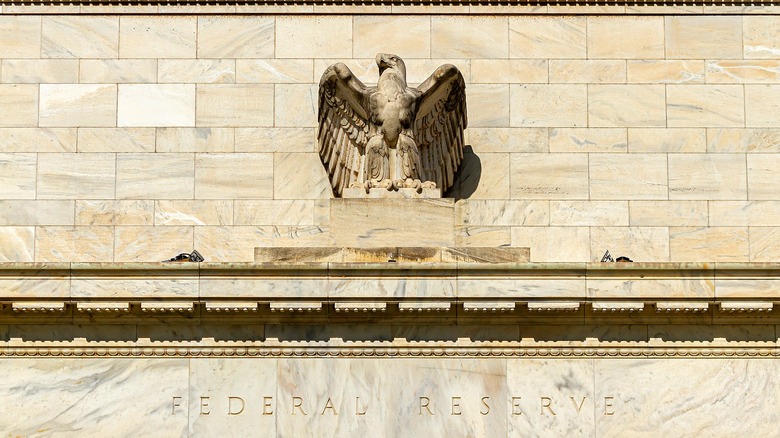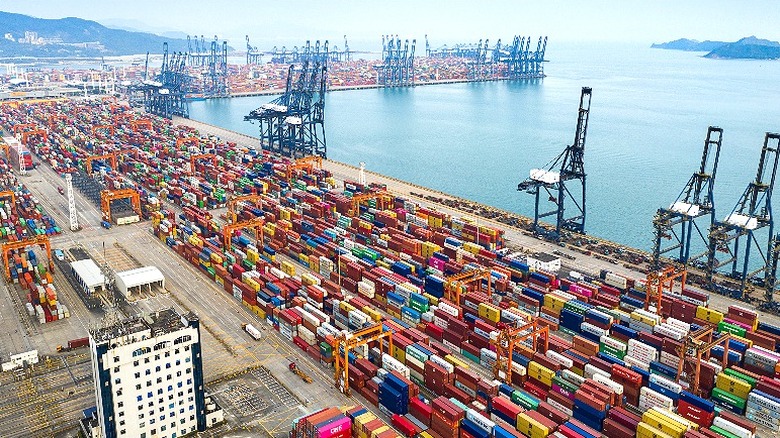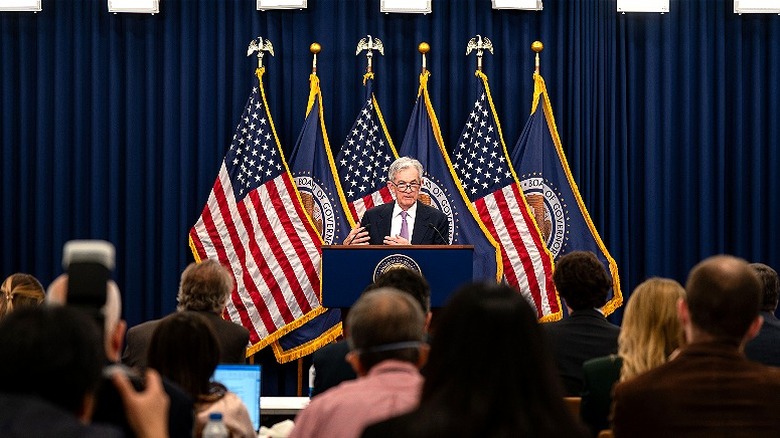The Fed Is Bracing For Trump's New Policies And It Has One Advantage
Economists are bracing for the potential new policies that could be put into place during Donald Trump's second term. His election victory, along with Republican control of both the U.S. House of Representatives and U.S. Senate, make it clear that fiscal policy is sure to change in the coming years. However, while economists and consumers are rightfully concerned, perhaps no organization is more centrally placed to face the brunt of these new economic policies than the country's central bank, the Federal Reserve.
Despite the fact that long-standing precedent kept most presidents in U.S. history from ever criticizing the central bank's policy decisions, Trump spent much of his first term in office not only criticizing the bank's monetary policy but also threatening its authority. Another troubling concern with Trump's second term centers on whether his office would continue to erode trust in the agency and thereby increase the chances of higher inflation and other economic concerns in the future.
However, despite growing concerns over how Trump's policies might ultimately affect the Fed and the economy in 2025, the Fed has maintained a sense of neutrality based on the idea that it's ultimately still unclear what might happen in the future. When asked about the potential policies that could be put into place during a recent event, Fed Chair Jerome Powell stated, "I think it's too early to reach judgments here." He also added, "I think we have time to make assessments about what the net effects of policy changes will be on the economy before we react with policy."
The policies that could affect inflation
While the Fed's ultimate advantage is the time it has to assess any new policies, and how it might ultimately affect the economy, it doesn't mean that the likely outcome of certain policies isn't already understood. So, while there are many concerning elements of Donald Trump's economic plan, two specific policies have the ability to not only reignite inflation, but lead to widespread economic issues (alongside increased deficit spending).
The first is Trump's insistence on implementing blanket tariffs on imported goods. While some might be wondering what, exactly, tariffs are and who pays for them, the important thing to know is that blanket tariffs on imported goods are almost guaranteed to raise prices for consumers. Plus, tariffs can and will contribute to the inflation rate that the country has only just begun to get control of.
The second policy that could prove damaging for the economy is Trump's proposed crackdown on immigration, including promised mass deportations. The problem with this plan is that many sectors of the U.S. economy rely heavily on illegal or temporary visa workers. This is especially true in the construction, agriculture, and hospitality industries. With the federal unemployment rate at just 4.1% in October 2024, according to the Bureau of Labor Statistics, some employers are already struggling to find workers. The deportation of thousands of current workers could mean labor shortages across key industries. This could, in turn, delay goods reaching consumers, lead to less customer service, and drive up labor costs, which would ultimately increase prices on goods.
What's next for the Fed
For now, the Fed appears to be relying on a wait-and-see approach. Like many economists, the central bank could be waiting to see which of the incoming administration's proposed policies are actually enacted, or at the very least, whether these policies will detrimentally impact the economy. As Jerome Powell previously stated, there's no policy response for the Fed to make until actual economic policy changes (from the new administration) are enacted.
In the meantime, the Fed has maintained it'll stick to its primary goals. Powell said during a speech on November 14, "The economy has made significant progress toward our dual-mandate goals of maximum employment and stable prices. The labor market remains in solid condition. Inflation has eased substantially from its peak, and we believe it is on a sustainable path to our 2% goal. We are committed to maintaining our economy's strength by returning inflation to our goal while supporting maximum employment."
Similarly, while the Fed has signaled that more interest rate cuts are coming (the committee responsible for interest rates just made its second rate cut in November 2024), it isn't in any rush. Powell stated, "The economy is not sending any signals that we need to be in a hurry to lower rates. The strength we are currently seeing in the economy gives us the ability to approach our decisions carefully." Note that while inflation had been steadily cooling, it did experience a slight uptick to 2.6% in October 2024, according to data from the Bureau of Labor Statistics.


